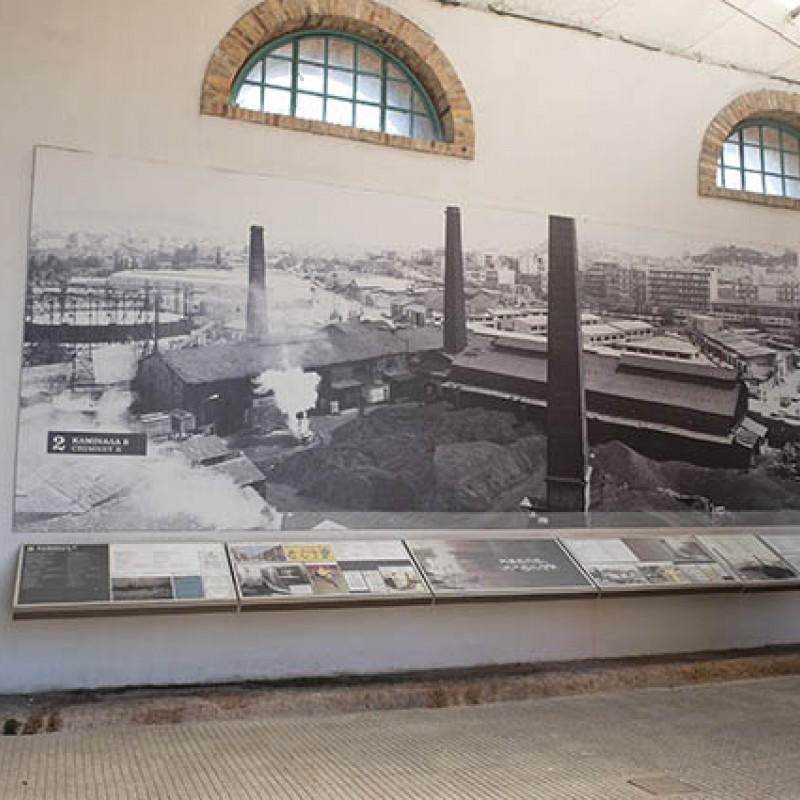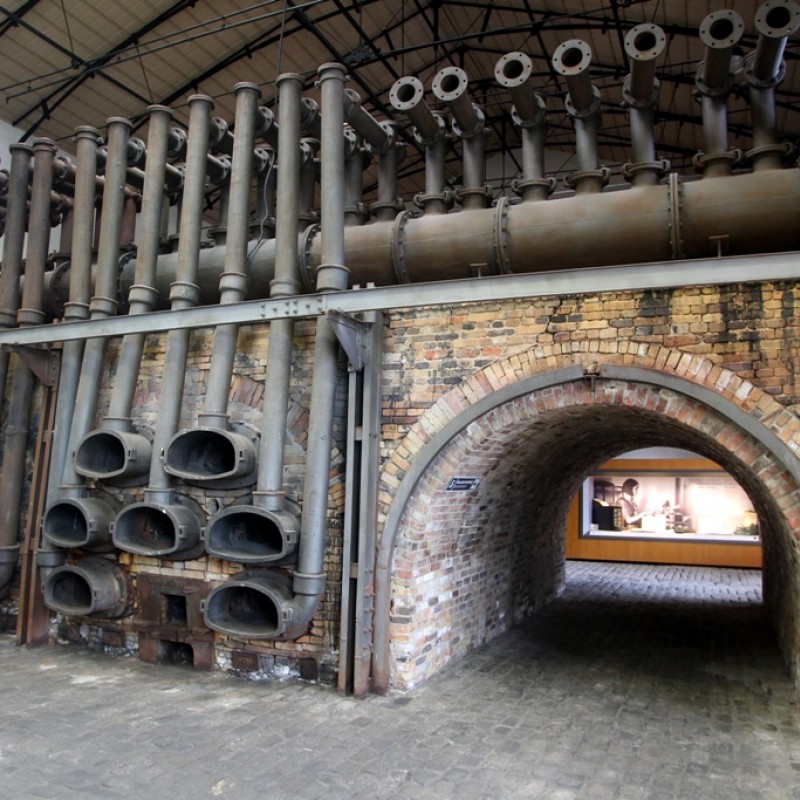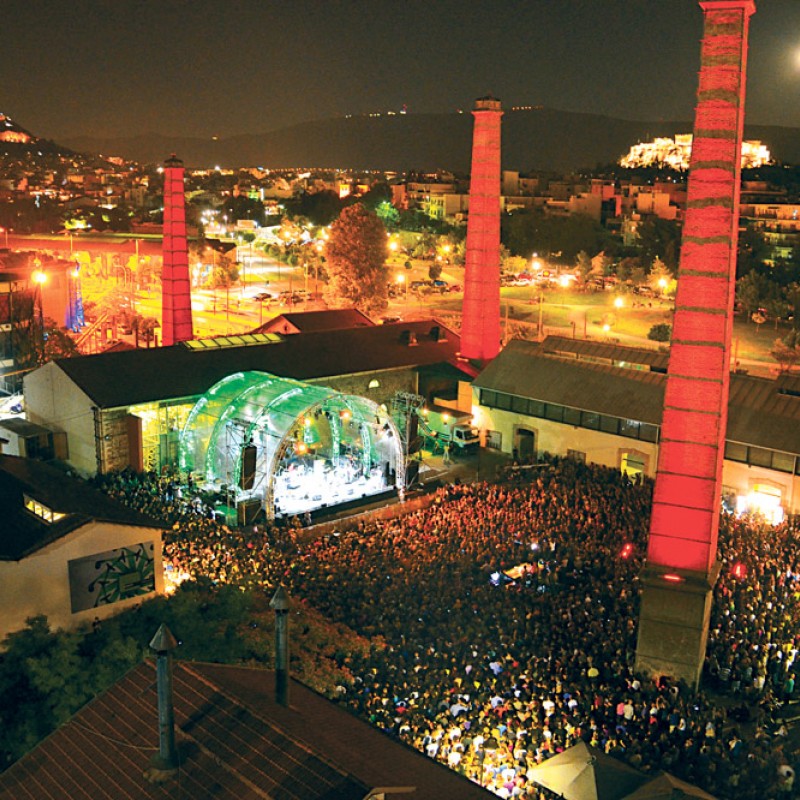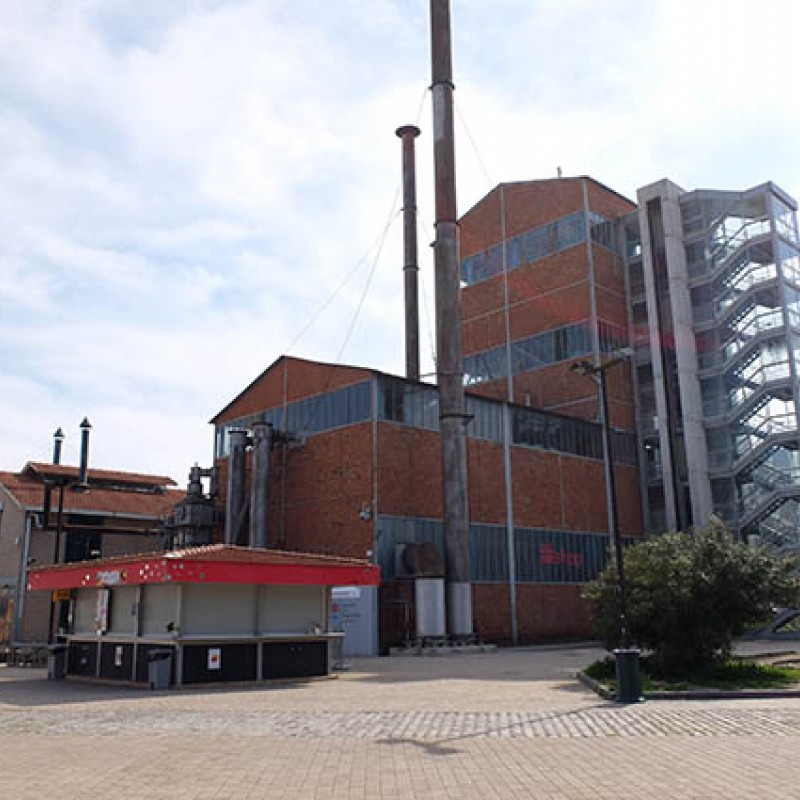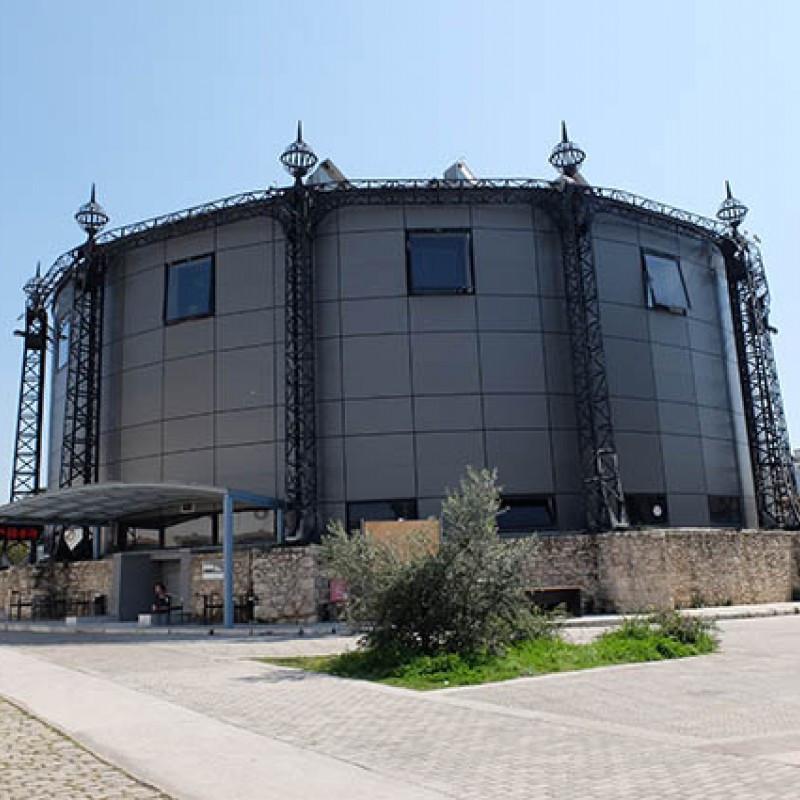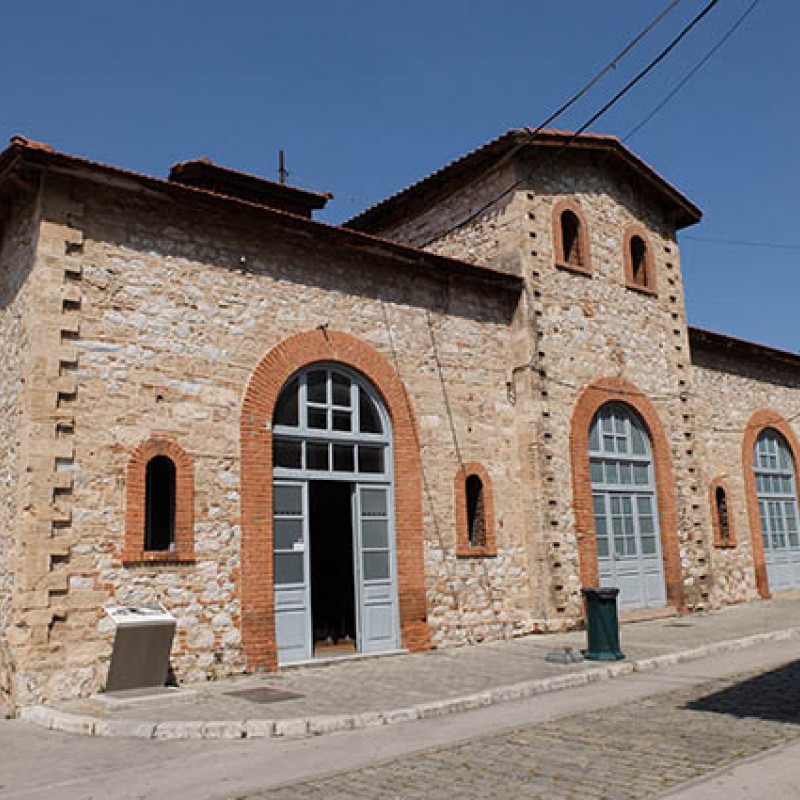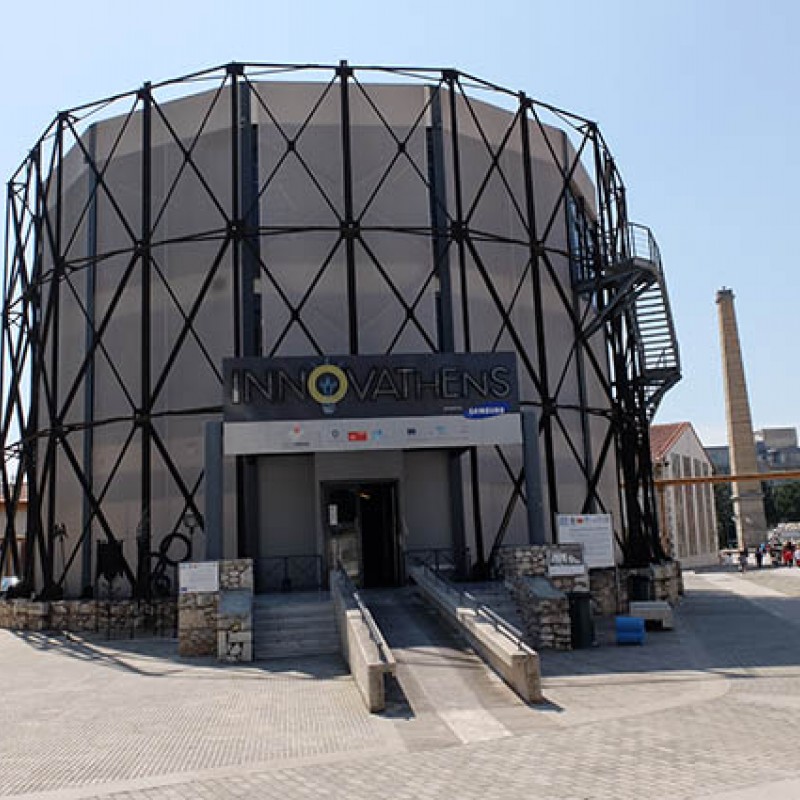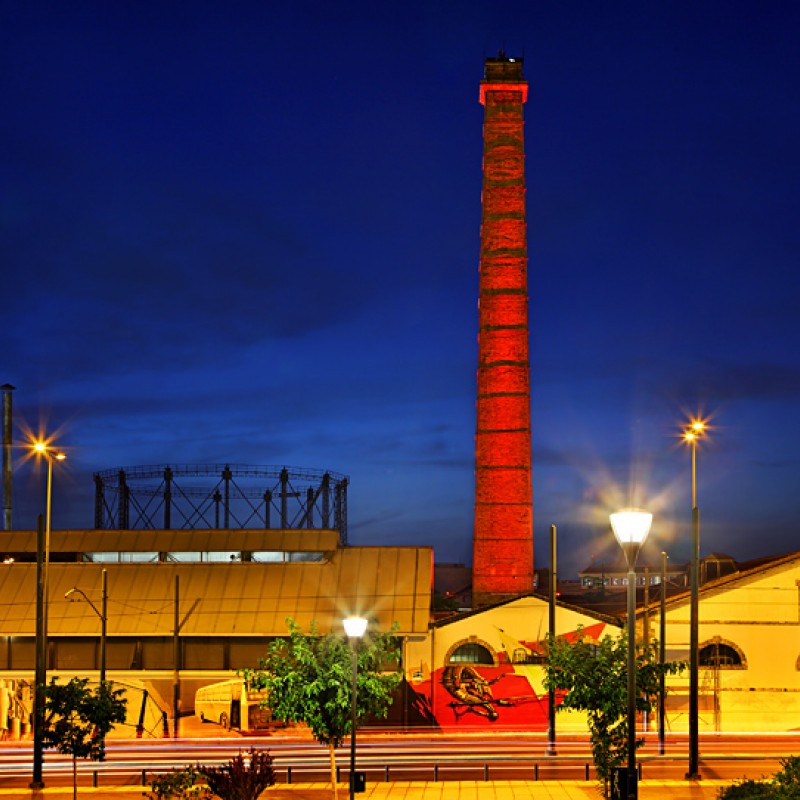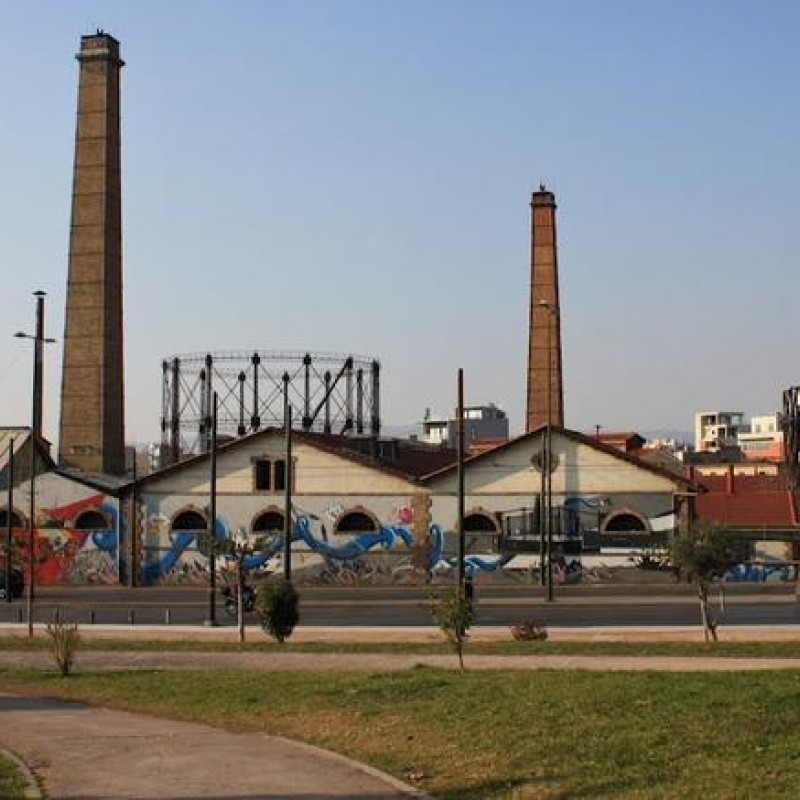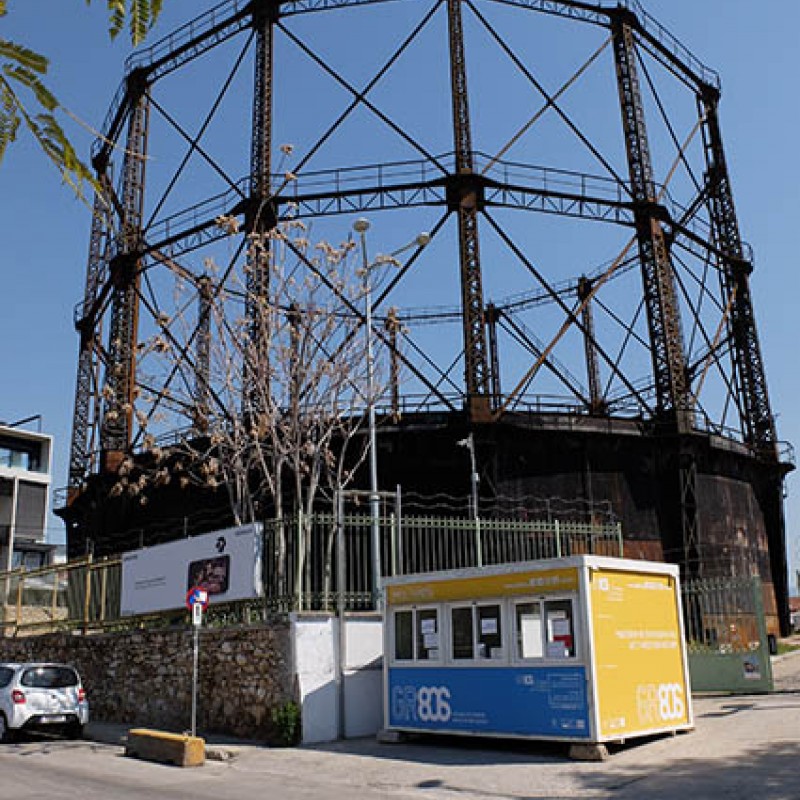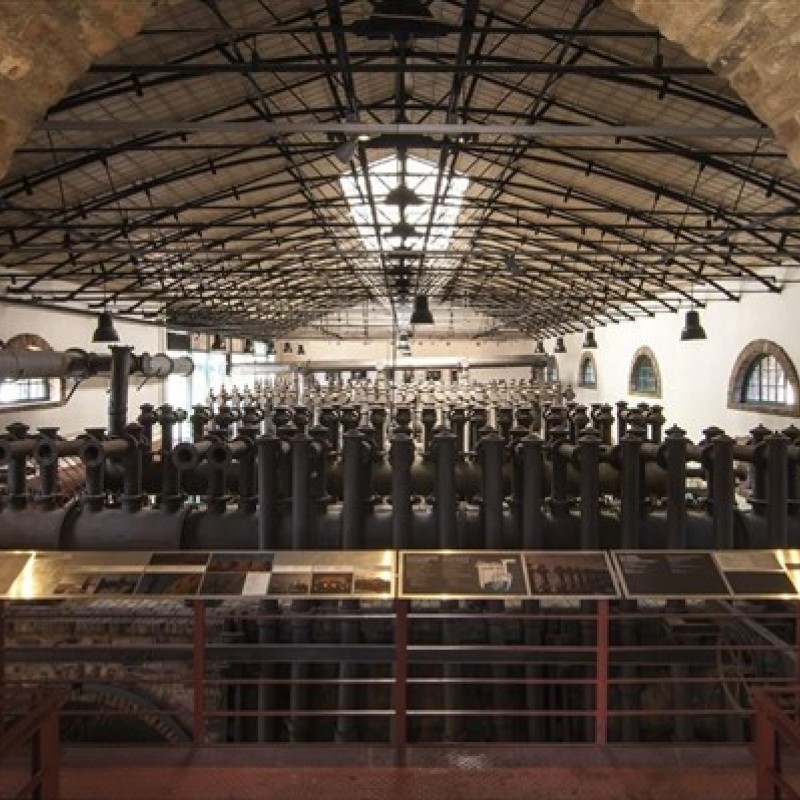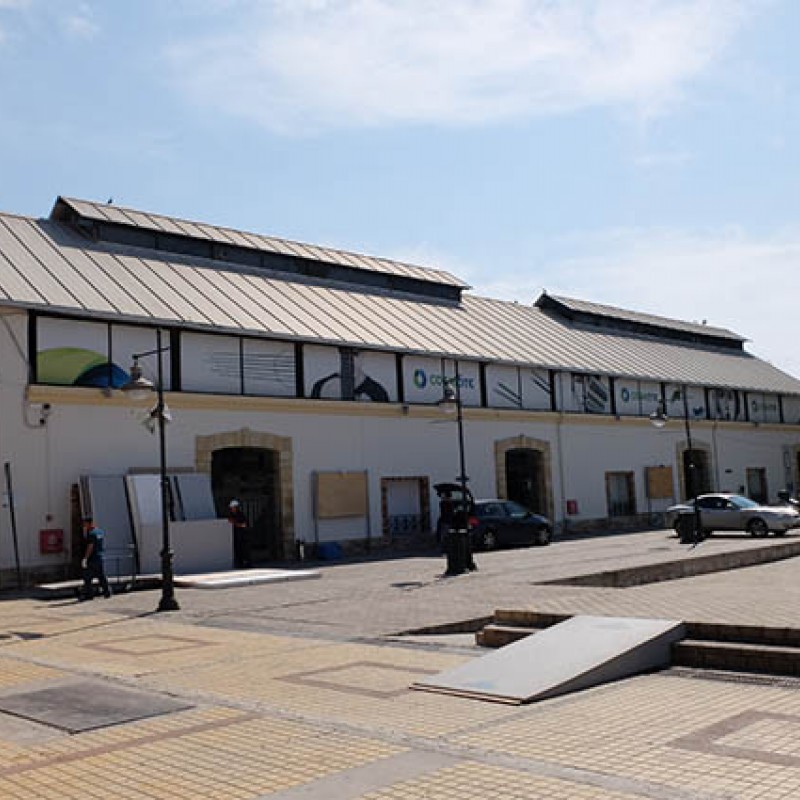Technopolis (Gazi)
Pireos 100, 118 54, Athens, Greece
| Former Use: | Gasworks | 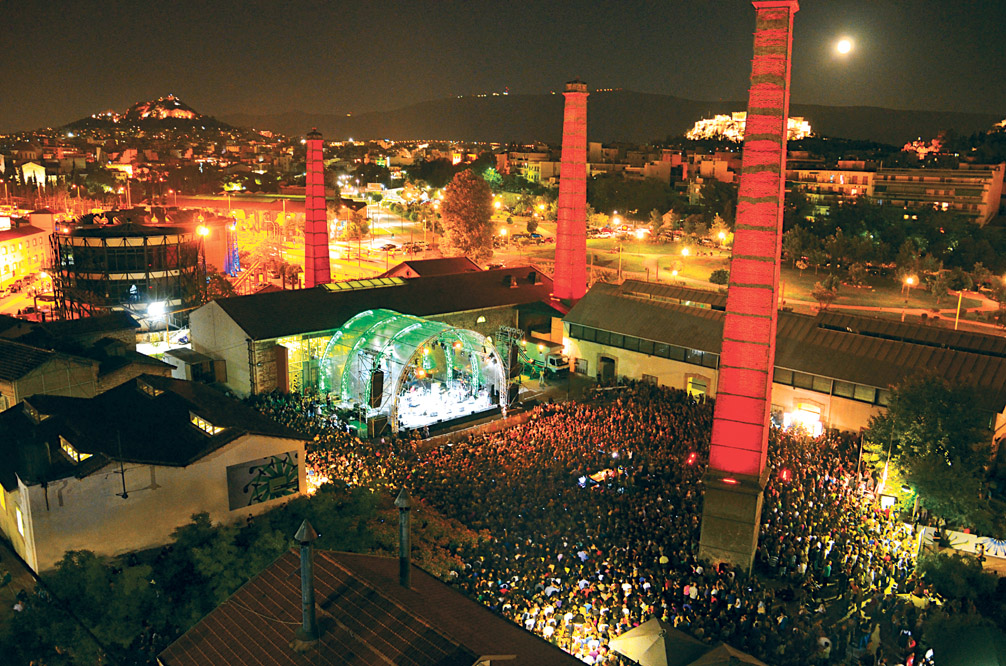 |
| New Use: | Cultural centre, industrial museum, innovation centre INNOVATHENS, radio station offices | |
| Category: | Culture, HoReCa, Industrial Museum, Office, Recreation | |
| Website: | http://www.technopolis-athens.com/web/guest/home | |
| Original Architect: | - | |
| Reuse Architect: | - | |
| Construction year(s): | 1862 - 1950 | |
| Reuse year(s): | 1999 - 2013 |
Description:
The Athens Gasworks or as it is commonly known “Gazi”, is located in the centre of Athens by Pireos street, the industrial axis connecting Athens with Piraeus port. The plant operated for more than 120 years before closing its doors in 1984. The transfer of its heavily polluting industrial activity left a vacant space of c. 25 acres the heart of the capital; only two kilometres away from Omonia square and in direct vicinity with the archaeological sites of Keramikos and Iera Odos.
The importance of the location and the significance of the industrial heritage, coupled with the persistent pressures from local groups, triggered in the early 1980s the City of Athens that owned the premises, to take action. A Panhellenic architectural competition was held in 1983 for the transformation of the gasworks. Two years later, the first prize of this competition was disregarded and the task was handed over to a team working in Department of Traditional Buildings of the Municipal Technical Services (8).
The conversion of such a complex and demanding venue was not an easy nor a familiar topic for the decision makers and the designers at that time. As a result, the period from the closure of the factory until the early 1990s was troublesome, characterised by critical developments being overshadowed by quarrels between the stakeholders and inconsistency in key decisions. Within this period the complex was listed and characterised by the Ministry of Culture as an Industrial archaeology park with a triple new function: Centre of technological and scientific information, Cultural centre and Gas factory museum. Another key development of the same period was the analytical survey and documentation of the buildings and their machinery by the team within the Municipal Department of Traditional Buildings as well as the start of the works for the restoration of the complex.
Unfortunately, the aforementioned positive developments confronted several issues. First, the lack of a single independent party for the project’s coordination and process management, aggravated by frequent alternations of local authorities with different agendas for the site caused serious delays and an inflated budget for the project. It also resulted in an arbitrary handling of the restoration and conversion strategy. Second, the discrepancy between the stakeholders’ views and the restricted experience of officials in charge with industrial heritage sites, took a toll on the integrity of the complex. After a series of listings and decommissions, part of the complex was finally demolished. Third, the absence of a long term consistent strategy, left vital issues unsolved, such as the decontamination of the site.
Technopolis became accessible to the public in three phases. Half of the premises opened for the first time in 1999. Six years later, when the restoration of the remaining historic buildings was complete, the second phase of the project was delivered. It is worth stressing out that the site functioned for almost a decade solely as a cultural and events venue (2).
The discourse around the success of the venture at the time was contradictory. On the one hand, the Greek architectural and historic community was raising the issue of an invasive reuse, mourning the loss of the demolished structures, the change of character of important buildings due to irreversible interventions and the looting of valuable archival material (4). On the other hand, the City of Athens was celebrating the opening of a cultural multifunctional venue in the heart of the capital; a venue that was warmly welcomed and quickly embraced by the Athenian public (9)
The last stage of Gazi’s redevelopment started in 2011 with the appointment of K. Bitzanis as the managing director of Technopolis. According to several members of the museum’s design team, the first priority of the new managing director who had realised the potential of the site, was to shift as quickly as possible its character: from an entertainment venue to a true cultural hotspot of Athens.
In order to achieve this goal, Bitzanis prioritised the creation of the Athens gas factory museum. A multidisciplinary team of historians, curators, museologists, architects and graphic designers was established for carrying out this task. In contrast with the former phase of redevelopment, this time the project was delivered on time and on budget while the approach towards the tangible and intangible values of the historic industrial complex was very different.
- “The goal of our intervention was to form a dialog with the previous phases of development adding a discrete and recognisable new layer, which will be completely reversible.”, *explains Erato Koutsoudaki, architect museologist of the museum
The museum opened its doors on January 2013, presenting the gas production line through the display and interpretation of the machinery preserved in situ. Thematic displays of the museum cover the topics of industrial heritage, the first applications of coal gas, the life of workers, entrepreneurship in the 19th century, the architecture of the industrial complex, the pubic lighting system, living conditions in the adjacent gas village and contemporary forms of energy (2).
Since May 2014, Technopolis houses also INNOVATHENS, a hub of Innovation & Entrepreneurship. In its short life INNOVATHENS has organised more than 500 events regarding education and training, networking and exchange of good practices and ideas and on-site development of new, innovative solutions. The organisation is mainly addressed to young people with innovative ideas, starting entrepreneurs and start-up companies as well as innovative enterprises wanting to develop their business model and enter the global market (10).
Today Gazi has established its role in the Athenian collective memory as one of the most vibrant cultural hubs of the city. It is an open, accessible space for a variety of social groups of different ages. Since 2014, it welcomes more than 900.000 visitors per year, in a multitude of events of cultural and social character. According to a research of Public Issue in May 2015 (11).Technopolis is by far the most popular venue of the city among the ages of 18-35.
The transformation of the former gasworks was coupled with two other seminal urban projects: the creation of the adjacent new park along Ermou street in 2006 and the opening of the metro station Keramikos covered by the new Persefonis square in 2007. The combination of these developments generated a massive chain reaction with nuanced effects in the socio-spatial context of Gazi.
On the one hand, the combined regeneration catalysed a cultural boom in the area. Several theatres, galleries and multifunctional cultural and educational spaces were created within the decade that followed Gazi’s transformation, such as Kakogiannis Foundation, Chitirion theatre, the Fine Arts School et.al. This cultural wave was combined with the flourishing of smaller music halls and bars, hosting mainly the alternative and LGBT community of Athens that was attracted to the area since the mid-1990s. Moreover, the area established a strong connection with the historic centre and its touristic movement, through the link to the network of the Unified Archaeological Sites of Athens.
On the other hand, the upgrade of the urban environment and infrastructure led to a massive rise of land values, followed by an intense constructive activity of luxurious apartments and ‘soft lofts’. The late 2000s saw the radical physical transformation of Gazi’s context and its simultaneous violent social metamorphosis.
Relevant Literature:
- Chatzi Rodopoulou, T., 2017. “Reloading 21st century cities with cultural energy. The transformation of gas factories into cultural hotspots in Amsterdam and Athens” in Proceedings of the International Conference on Changing Cities III: Spatial, Design, Landscape & Socio-economic Dimensions, Syros, Delos, Mykonos Islands, Greece, June 26-30, 2017, pp. 1786-1796.
- Stoyannidis, Y., Chatzigogas, S., 2013,Industrial Gas Museum: The Athens Gasworks, Athens: Technopolis, City of Athens
- Skopelitis S. V.,1984, Gasi, Nea Sinora, Athens
- Macheras, G. The gaslighting factory, Kathimerini 7imeres, 13-10-2002.
- Ministry of Culture, 1999, Industrial minuments of Greece, Athens
- http://www.technopolis-athens.com/web/guest/museum/history
- http://www.eie.gr/archaeologia/gr/arxeio_more.aspx?id=216
- Prepis, A. 2008. The Athens Gasworks; Reintegration in the modern city life. Mikra Mousiologika 2, Athens, 105-134, 121
- http://www.kathimerini.gr/160625/article/politismos/arxeio-politismoy/to-outlook-kai-oi- a8hnaikes-filodo3ies
- https://www.innovathens.gr/innovathens-en-2/
- Technopolis City of Athens S.A., 2016, Technopolis in Numbers. Athens.
